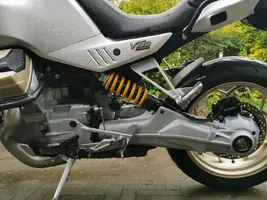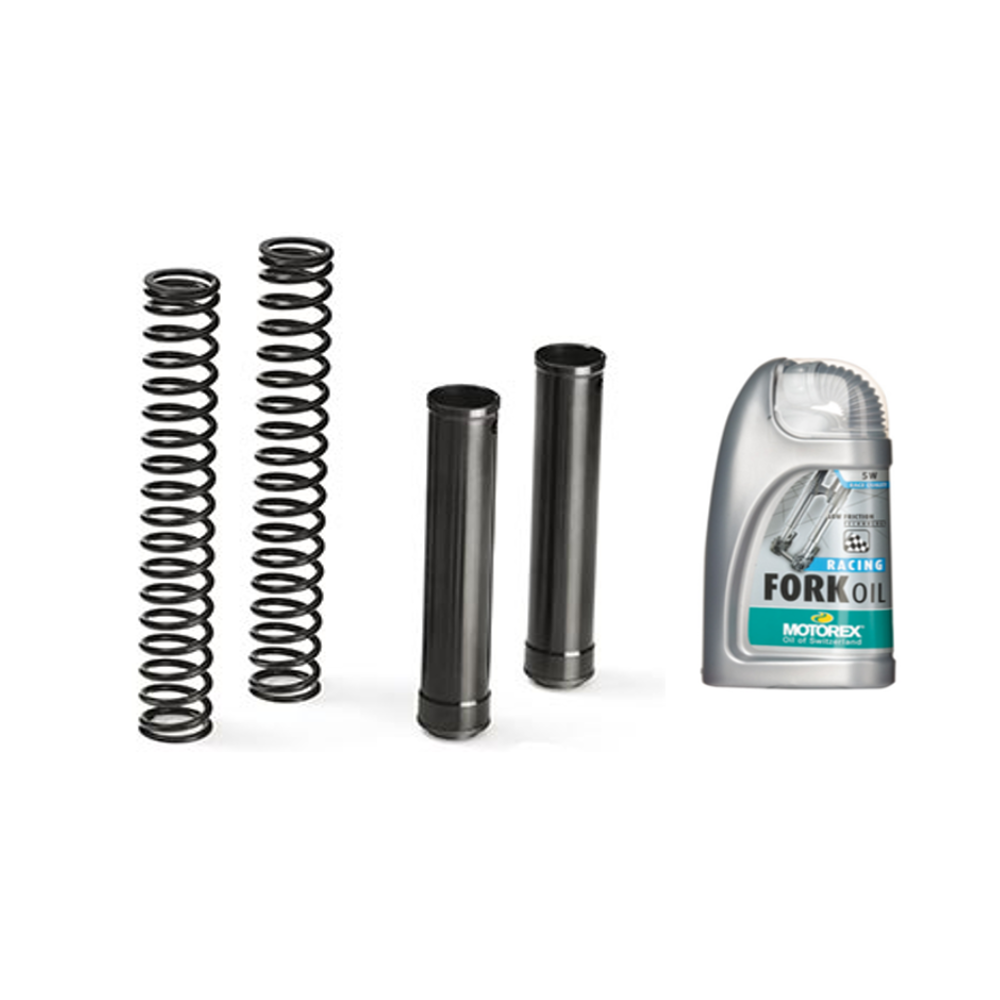Some thoughts on the shortcomings of the standard suspension on the V100 with Kayaba suspension
I am confused about the factory choice of suspension for the V100 base model.
I am a cautious rider, usually riding alone and only on tarmac, without pushing the bike to its limits. I also have no special knowledge of motorcycle engineering. In terms of setting up the suspension on my bike, it is important to note that my own weight is almost 70kg. With clothes, helmet and personal items in the tank bag, such as camera, mobile phone, keys and disc lock, the total weight is about 80 kg.
Let me start by saying that I am not convinced that the semi adaptive suspension of the V100S would have been the solution for me. Semi adaptive electronically controlled suspension has other drawbacks, which is why some buyers, like myself, prefer traditional damping. For me, the traditional suspension is worth it, even if the search for the ideal setting is a long one.
I was surprised by the suspension characteristics of both the front fork and the swingarm with the factory settings. At the front, the fork feels undefined, and at the rear I found the damping to be ungracefully firm over large bumps when riding solo, while the suspension and damping smoothed out when riding with a passenger.
I started by measuring free and rider sag, both front and rear. I then looked for and compared the values considered normal by experts. Finally, I tried adjusting the standard settings and assessed whether the bike felt better after the adjustment.
According to the manufacturer's specification, the standard maximum suspension travel is 130mm both front and rear.
Front fork
The measured free sag and rider sag are 40mm and 49mm in the standard setting. The free sag is high by expert standards and the riders sag, while also high, is closer to the normal range. What is particularly striking is that the difference between the free sag and the riders sag is remarkably small. This leads me to suspect that the spring rate of the standard single spring in the right front fork is too high.
Swing arm
At the rear, we measured 13mm of free sag and 30mm of rider sag. This corresponds to the values given by experts. The merciless hits over large bumps indicate that the rebound damping in the shock absorber is too strong at higher piston displacements. By unscrewing the screw at the top of the shock as far as possible, I reduced the rebound damping, with some improvement, but I still experienced rough damping over large bumps.
Adjustments and results
Front fork
I increased the preload to the maximum and the rebound damping by 3 clicks. The free sag went from 40 to 36.5 mm, the rider sag from 49 to 44 mm, a value that is still considered by experts to be quite wide, while the difference in travel also shows that the spring rate of the standard single spring in the front fork is quite high. With the aforementioned adjustment of preload and rebound damping, I noticed that the front fork felt more defined and reassuring. Intuitively, I would think that the solution would be to replace the single spring in the front fork with a spring with a lower spring rate, but with more preload to further reduce free sag. However, I have no idea whether this would be possible in practice.
Swing arm
I am aware that the damping force increases with the square of the speed, which means that doubling the speed of the damper shaft will quadruple the damping force. I was expecting that fitting a replacement spring with a lower spring rate than the standard would result in smoother movements, less rebound damping and therefore less harsh damping over large bumps. The standard Kayaba spring has a slightly progressive spring rate of 132 to 145 N/mm. The selected replacement spring has a spring rate of 120 N/mm. I added about 6 mm of preload to compensate for the ride height and to achieve about the same 30 mm of sag as with the stock spring. The result is that the rear suspension is more forgiving when ridden solo, and the bumpiness is reduced, but not eliminated. When riding with a passenger, however, the rear height drops too much, which cannot be compensated for by further adjustment of the preload adjuster. I don't have the feeling that the swingarm is optimally adjusted. I am now considering replacing the hydraulic oil in the rear shock with a lower viscosity oil of 12.4 instead of the standard 20.5 mm2/s in the standard Kayaba shock.
I would like to ask the readers of the forum what they think of my measurements and experiences. Are there readers who confirm my measurements and experiences or have different measurements? What other measures do you have in mind to improve the handling? Are there any readers with experience of replacing the single spring in the front fork or shock absorber, or perhaps changing the hydraulic oil in the shock absorber?

 gtmotocycles.com
gtmotocycles.com


) That gives the front approximately 34mm sag with my 210 pounds onboard.









